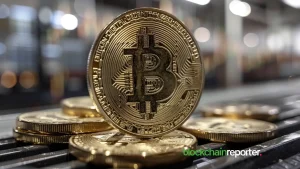
A week ago, it seemed difficult to foresee any story displacing Elon Musk off the top pages of business publications. However, FTX, the third-largest cryptocurrency exchange in the world, crumbled. The scenario is ludicrous, including narcotics, secret software backdoors, a strange drowning in Puerto Rico, and the theft of millions, if not billions, of dollars.
There was even a mad run to Argentina on a private plane, which was tracked in real-time on flight tracker apps with social media updates. Except that proved to be entirely incorrect. Sam Bankman-Fried, the founder of FTX, whose name is a tribute to nominative determinism, was actually spending four hours a day in the Bahamas playing League of Legends (It is true).
However, there is something far more harmful to the sector at the heart of this narrative than theft, wrongdoing, or simple ineptitude. The true problem is contagiousness. There are already indications that crypto exchanges have played fast and loose with liquidity transparency.
Unproven rumors circulate regarding transactions that resemble the exchanges distributing funds among themselves for the sole aim of hiding proof of reserve. Adam Cochran, a venture capitalist, highlighted two questionable transactions and inquired, “Are exchanges handing around ETH loans to pass audits?”
Here’s the thing: it does not need to be true for the community to lose trust; they just need to suspect it might be true. If these worries gain systemic traction, the reversals of the previous year will seem like a cakewalk. Cryptocurrency is approaching its own GFC moment. This is how that event transpired:
The FTX Meltdown Was Inevitable
Adam Cochran observed a peculiar pattern on September 30: while other crypto exchanges’ Ethereum “open interest” (number of futures contracts bought on leverage) was falling, FTX’s was not. It reached a record high:
At the time, we had no idea why but we eventually learned that FTX and Alameda had illegally misappropriated consumer funds for years and designed their systems to maximize every dollar for their own gain.
During the summer, we learnt that FTX had been utilizing $FTT and $SRM tokens to get massive loans from centralized lenders such as BlockFi and Celsius, frequently dumping the assets they borrowed to disrupt the markets before buying out these troubled lenders.
What then is the issue with these tokens? Adam Cochran stated that they are mostly controlled by Alameda and have a limited supply in circulation. It would be as if you sold a single hair strand for $100 and then claimed that the rest of our hair was collaterally worth $1 trillion.
However, the market believed that these games ended when bad lenders made agreements they should not have. We were mistaken. Early in October, SBF secretly began lobbying the US Congress for the DCCPA law.
This bill would prohibit decentralized finance and require users to use centralized goods such as FTX. There was a growing pattern that none of us recognized at the time. With hindsight, it is evident that everything was about placing additional assets in FTX.
Later, we learned that whenever FTX/Alameda invested in a company, they frequently instructed the enterprises to use the FTX platform as their bank account and to keep their assets on the exchange as a condition of the investment. Adam Cochran explained that this DCCPA law was only a reiteration of the maxim “more assets on the exchange.”
Near the end of October, attorney Gabriel Shapir obtained and released a copy of the DCCPA draft bill that had been circulating in Washington. Sam’s actions resulted in the community’s indignation when they realized that DeFi would be banned.
Sam became increasingly unpredictable, belligerent, and rude over the next few days. It is also where he made the now-infamous remark about Binance CEO Changpeng Zhao not flying to Washington, D.C. Sam continues to falsely assert that this resulted in CZ assaulting the value of their token and bringing down their exchange.
According to Adam Cochran, the community found the lighthearted tone of SBF peculiar. There appeared to be an obvious problem behind the scenes. Then, on November 2nd, a summary of Alameda’s assets was revealed, indicating that Alameda may be insolvent:
Instead of responding to these posts, Sam continued with business as usual, including his new and sudden weekly practice of posting a teaser for the $FTT buybacks in an attempt to increase the token’s value:
Then, we learned that Alameda had over $8 billion in loans backed primarily by its $FTT token – something that no professional lending desk (the type that would have $8 billion to spare) would ever permit. Except perhaps FTX.
At this point, the community got frightened. Unlike a bank, a cryptocurrency exchange is not permitted to lend you all of your assets unless it’s explicitly stated in their terms of service or you opt-in to a specialized lending program.
According to Adam Cochran, FTX’s terms of service specifically require that you keep title to your assets, which means, if they utilize them for any purpose other than what you ask them to, it’s legally theft.
However, FTX’s opt-in lending market revealed just about $2.8 billion in authorized peer-to-peer lending. Something that would not make up the required total amount of loans to Alameda.
FTX also had an “Earn” program through the previous Blockfolio app, however, the head of sales affirmed (at least as far as FTX workers were informed) that these funds originated from marketing dollars and not loans.
The Irregularities And Misuse Of User Funds
Adam Cochran noted that historical snapshots of FTX’s balance on November 3rd indicated only roughly $3 billion in assets, of which $1.4 billion was their own token. This suggested two possibilities: either FTX possessed an undocumented “cold wallet” or FTX was illegally lending (stealing) user assets.
In light of the abundance of large FTT transactions sold off-exchange (peer-to-peer) during the past few weeks, analysts surmised that FTX was attempting to conceal a problem. At that time, Binance transferred the $583 million in FTT remaining from their investment in FTX. The following morning, CZ made an unusual announcement that they would be selling their FTT:
He observed anomalies among FTX. Adam Cochran had suspected a small financial imbalance, but this appeared to be considerably larger. This was unexpectedly confirmed when Alameda CEO Caroline broke her silence over funds and offered to purchase the remaining FTT.
Adam Cochran observed that, when withdrawals increased on FTX’s exchange, Alameda’s wallets began withdrawing stablecoins from everywhere to replenish the FTX hot wallet. It is essential to recall that this occurred on November 6, a full day before the date SBF claims the exchange was solvent:
But then on November 6th, FTX stated that this was what was stalling their deposits and why stablecoin balances were being replenished only by Alameda and not by a cold wallet used to keep customer assets. However, ETH balances began to diminish as well.
In the meantime, the $550 million that Alameda claimed to have in order to acquire the remaining Binance FTT failed to support the price. How could a group claiming $24 billion in assets and an exchange claiming $10 billion or more in user assets not complete their purchase?
At this point, the market as a whole became exceedingly apprehensive. Despite the fact that it was evident that something was amiss, none of us knew how dire the situation was. On a per-asset basis, FTX ceased processing withdrawals for a variety of assets sometime during the 7th night of November. User accounts were completely frozen.
People believed at the time that FTX had likely lost some user cash and would likely raise a little amount to pay the remaining balance before moving on. Instead, they awoke to the news that Binance would acquire FTX in its entirety, pending due diligence.
But within a day, Binance withdrew from the agreement, claiming too many regulatory and user-fund misuse concerns. It was one of the earliest indications that an illegal act had been committed. That SBF had constructed a secret “back door” to lend Alameda users money without the transaction being recorded in the FTX logs.
On the morning of November 11, Sam reemerged, placing FTX and Alameda into Chapter 11 bankruptcy and resigning as CEO. We now know that something requires a significant internal struggle to obtain.
In the following days, Adam Cochran reported that Sam worked diligently to get favorable media articles written about him. This debacle was framed as “a mistake,” “they became too big,” he was “honest and humble,” and this was the result of “poor bookkeeping” and a “rival.”
According to Adam Cochran, the objective was to portray SBF as a fine kid who bungled a rapidly expanding business when a rival attacked him, rather than a criminal who took unnecessary risks with user funds.









